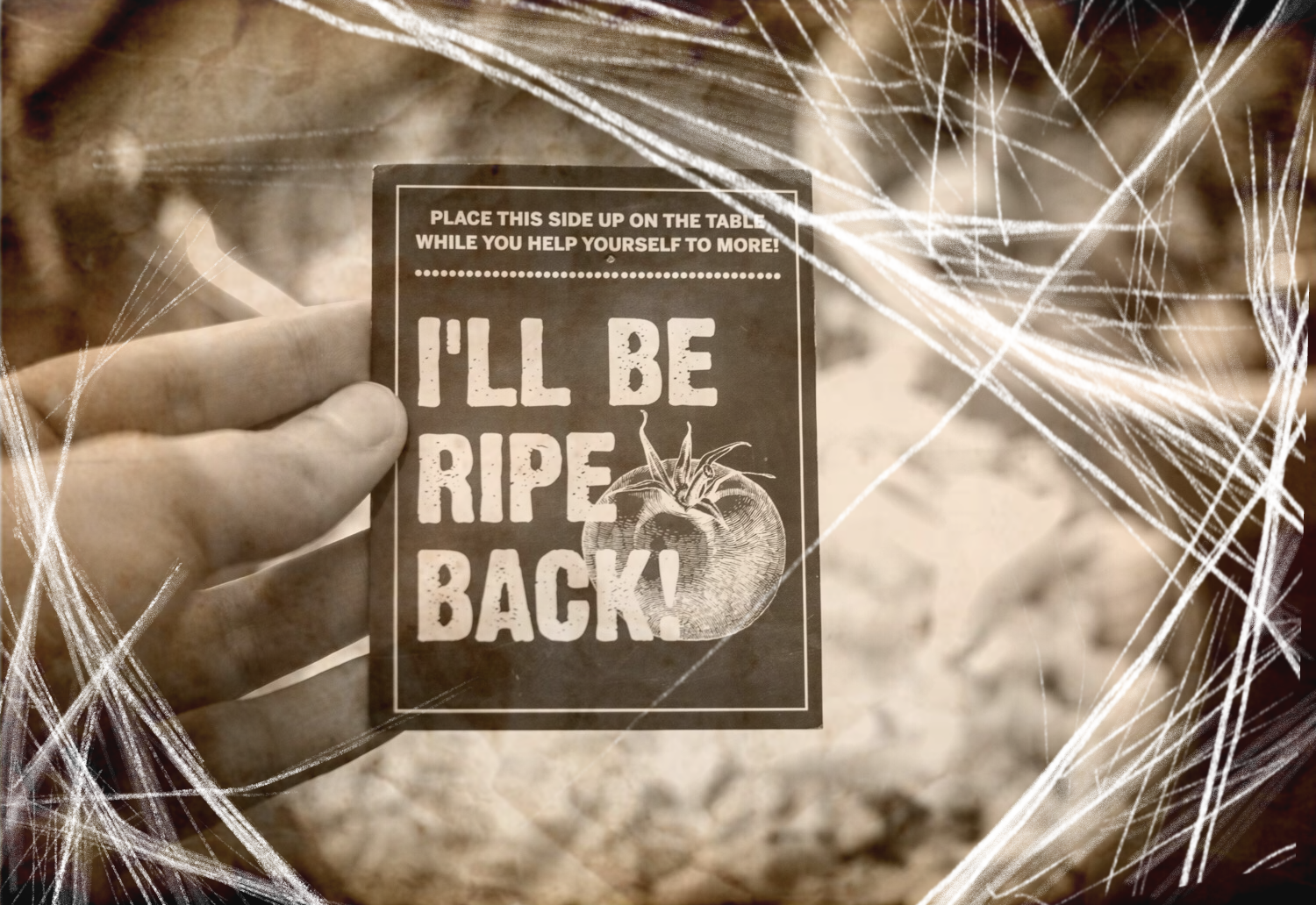The Quad: Reflecting on the comfort, history of buffet-style dining despite its uncertain future

San Diego-based restaurant chain Souplantation announced in May that it will not be reopening any of it’s 97 buffet-style restaurant locations. (Photo by Kanishka Mehra/Assistant Photo editor, Photo Illustration by Nghi Nguyen/Daily Bruin)

By Kanishka Mehra
May 28, 2020 10:02 p.m.
As much as it pains me to say this, it might be time to say goodbye to the self-serve, all-you-can-eat restaurant design.
San Diego-based restaurant chain Souplantation announced earlier this month that they will not be reopening any of their 97 buffet-style locations after the COVID-19 shutdowns. And, although Southern California residents may raise an eyebrow at out-of-towners referring to their beloved Souplantation as “Sweet Tomatoes,” both groups would surely agree that name is unimportant in light of what the restaurant chain faces now.
Thanks to a global pandemic and health concerns, buffet-style restaurants – and even our own self-serve bars at UCLA dining halls – may soon fade into carb-loaded oblivion. To find out why, let’s dive into the history of buffet-style dining and the reasons why it no longer seems to fit in today’s world.
Though buffets seemed to be, at least at one time, a cornerstone of American culture, it turns out their roots are actually found in 20th-century globalization and commercialization.
At the 1939 World’s Fair in New York, the Swedish introduced Americans to the concept of a smörgåsbord: a long table that is home to an array of cold cuts, warm appetizers, regional delicacies, side salads and drinks that eventually transition into entrées and desserts. This wide assortment of food was evidently extremely appealing to the American observers, and the introduction of the smörgåsbord ushered in the beginning of the evolution into the buffets many of us frequent today.
The Swedish gave us the idea of the smörgåsbord, but the word “buffet” comes from the French. A buffet refers to an elaborate display of food that signified grandeur; the idea was to dine in abundance, like the gods.
Despite its European and New English origins, this culinary design as we know it in the United States today initially grew out of the American southwest, when Herb McDonald established the first American buffet in the 1940s. Named “Buckaroo Buffet,” the Las Vegas eatery served all-you-can-eat salads, meats and other cost-effective foods that would entice visitors to spend more time in the casino. The cost to enter? Just a single buckaroo.
It’s easy to see why buffets quickly became an American staple within the casino business. They were practical for families, convenient for travelers and profitable for owners who realized they could continuously feed tourists and casino-dwellers to keep them from exiting the establishment.
Not to mention, television commercials advertised lavish spreads of comfort foods and promises of satisfaction, capitalizing on the allure of greed and excess that were characteristic of casinos. The concept of casino buffets became a family favorite and soon led to the evolution of the comfort-style buffet chains people have come to love.

Over the last 80 years, the popularity of buffet chains has fluctuated. For buffet-style restaurants like Souplantation and Sweet Tomatoes, threats to the industry have taken several different forms over the years.
During the 2008 financial crisis, Souplantation, along with many other buffet chains, filed for bankruptcy due to a lack of customers – despite a regular lunch visit costing just under $10 per person. While American buffet restaurants came out of the recession with high hopes, they were suddenly met with a more health-conscious public and increasing awareness about the spread of foodborne diseases, such as E. coli and salmonella.
Despite dips in business over the years, buffets have never faced as glaring of a threat to their existence as they do today. Renewed financial instability as a result of the pandemic, a more health-conscious public and sanitation concerns have rendered buffets an unsustainable business model, with physical closures of the restaurants due to COVID-19 as the final blow for some.
Shutdown orders across the nation have caused many restaurants to close temporarily or shift to delivery and take-out only. Buffet-style restaurants, on the other hand, have been forced to shut their doors completely, as their business models aren’t conducive to contactless alternatives.
John Haywood, the CEO of Souplantation and Sweet Tomatoes, said in an interview with Restaurant Business earlier this month that finances were going well for the chain until federal regulations caused them to close all of their restaurants with no foreseeable date for reopening or feasible way of doing so in the meantime.
“The magic of our concept is people being able to customize and control their own experience,” Haywood said in the interview. “To convert it into basically a table-service restaurant doesn’t work.”

I hear you, Haywood – I hate to see the restaurants go, too.
Growing up, outings to Sweet Tomatoes meant relaxed, quality time with the whole family in a comfortable setting surrounded by food. The 50-foot-long salad bars, trays of comfort foods and well-stocked dessert stations were more than just visually appealing – they also sparked my inner child. There was something magical about getting to try it all and making my own decisions with instant gratification.
As it turns out, I’m not alone in my nostalgia for buffet-style restaurants; several other Bruins are feeling the same sense of loss.
Third-year physiological science student Ishita Monga was saddened by the news that Souplantation and Sweet Tomatoes would not be reopening in the future.
“When I came home because of the pandemic, I was like ‘I can’t wait until this is all over and we can just go to Sweet Tomatoes, and have a nice dinner,’” Monga said. “When I saw the headline, I was staring at it for a while, like ‘You can’t be serious.’”
It’s a shame that one of our favorite places to eat will not be there after we emerge from quarantine, but reflecting on memories can provide some comfort. Second-year human biology and society student Miranda Le reminisced on the good times she had with her family at the establishment.
“We would go to Sweet Tomatoes and put all of the tables together and have a big feast sitting in a buffet,” Le said. “A good thing about buffet-style restaurants is that they’re a haven for kids: you can play with your food and make cool concoctions, so it was just a very fond memory of my childhood.”
But even more concerning than one buffet-style restaurant chain closing is the potential that all of them may close in the near future.
Equally disheartened by the news, first-year neuroscience student Annika Zhang said she believes buffets will suffer more from the consequences of the pandemic than sit-down restaurants because of buffets’ do-it-yourself theme. The pandemic may cause people to be more cautious about doing anything themselves, even after it’s over, Zhang said.
Although we can’t use Souplantation and Sweet Tomatoes as the light at the end of the quarantine tunnel anymore, and though the future of buffet-style dining may be in jeopardy, the memories we formed at these restaurants live on in our hearts. To commemorate the end of an era, I prepared some of my favorite buffet foods from Sweet Tomatoes.
But, in the midst of all this bad news for buffet-style restaurants, some think that their future is not so dismal. No one knows for certain if buffets will ever make a comeback, but Monga said she anticipates they will live on because of their cost-effectiveness.
“When you go to a buffet, you pay $15 to $20 and you can eat an unlimited amount of food; the value of that food is probably going to be more than what you paid for,” Monga said. “Whereas if you go to a sit-down restaurant and get a $15 dish, that’s only one plate of food. It’s not the same.”
The future of buffet-style dining might currently be up in the air, but one thing is for sure: nothing will compare to the feeling of home and comfort I felt at Sweet Tomatoes. There won’t be a next “thyme,” but the skill of fitting multiple different kinds of pasta on one plate will stay with me forever.


